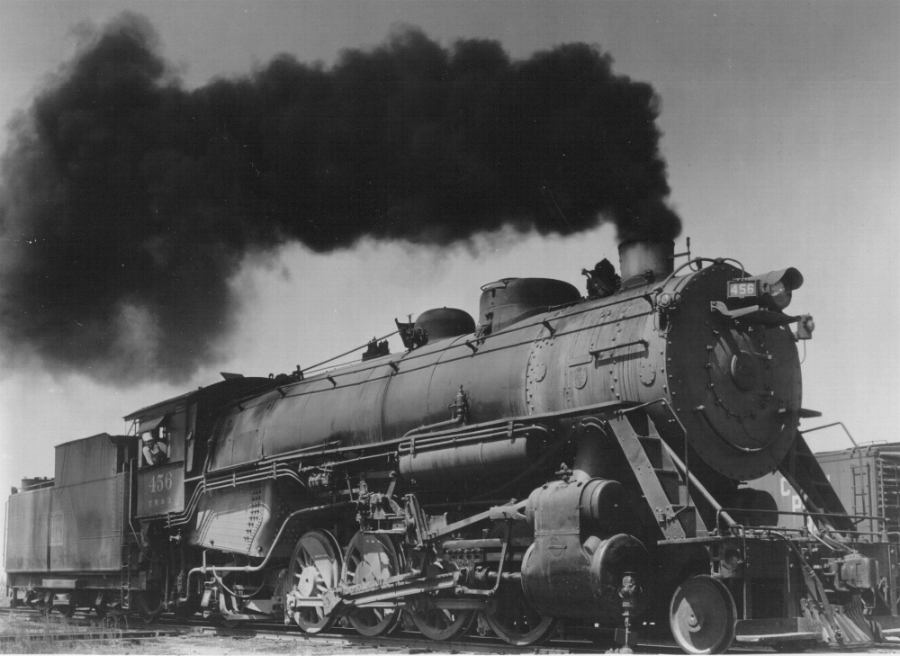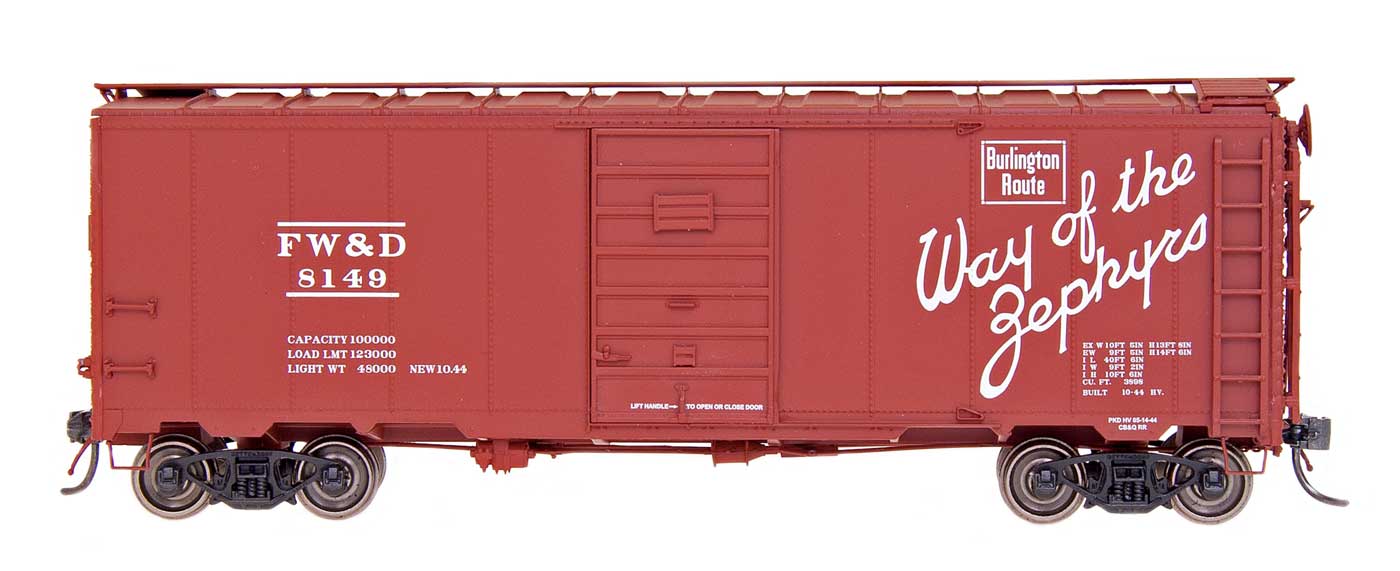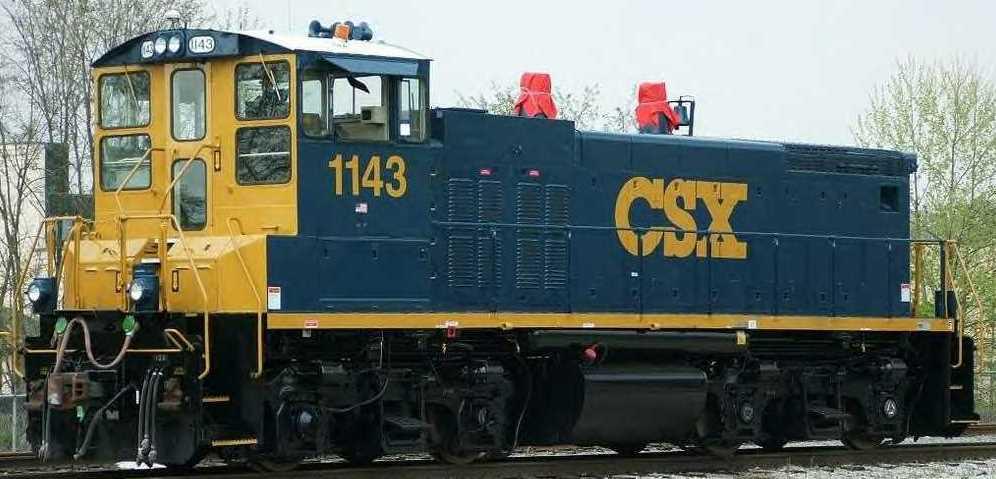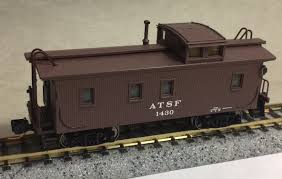Specific Item Information: Prototype manufactured in October of 1944.
Prototype History: The Association of American Railroads had been establishing design standards for freight cars since the early part of the century. Each new design standard meant higher capacity, lighter, more durable cars. The 1937 standard 40' box car featured an interior height of 10'. Just prior to America's entry into the war, there was a push for an even larger interior height for the AAR standard. The first cars that would eventually be termed 1944 AAR, were actually built in 1941 but the war delayed its declaration as the standard. The new taller cars required a new design of end. Corrugated metal ends had been used since the days when wood side cars dominated for a very good reason, shifting loads would burst through wooden ends during sudden starts and stops! These corrugated panels were stamped in two sections, split horizontally down the middle. The 1937 standard had 5 ribs on one half and 4 ribs on the other -- creating what is called a 5-4 Dreadnaught end. The slightly taller 1944 model required something a little different. The lower panel has 4 ribs while the upper panel has 3 then a space and a final rectangular rib at the top. Called a 4-3-1 (or R-3-4) Improved Dreadnaught end, this design would dominate new box car construction for years.
Road Name History:  The Fort Worth & Denver City was built between 1881 and 1888 from Dallas-Fort Worth, Texas northwest through Amarillo to Texline on the Texas – New Mexico border. There it met a predecessor of the Colorado & Southern that was building south from Cheyenne and Denver. Through acquisitions and more construction, FW&D added 5 branches, including lines to Lubbock and Abilene. As with the C&S, Burlington Route took control of the FW&D early in the 20th century. These lines, combined with the Trinity & Brazos Valley gave Burlington’s parents (Great Northern and Northern Pacific) a relatively direct route between the Pacific Northwest and the Gulf Coast. As with the C&S, over the years the Burlington Route image made big inroads, relegating the FW&D to initials on the cab and freight car reporting marks. Despite the image, FW&D was left by Burlington to manage their own affairs in many ways (which stands to reason, FW&D didn’t directly connect with CB&Q!). In 1951, the “City” was dropped from the name. Control of the FW&D passed to Burlington Northern in 1970. On the last day of 1981, sister road C&S was merged into BN and their line south of Denver was transferred to FW&D. In 1982, Fort Worth & Denver was also merged into BN.
The Fort Worth & Denver City was built between 1881 and 1888 from Dallas-Fort Worth, Texas northwest through Amarillo to Texline on the Texas – New Mexico border. There it met a predecessor of the Colorado & Southern that was building south from Cheyenne and Denver. Through acquisitions and more construction, FW&D added 5 branches, including lines to Lubbock and Abilene. As with the C&S, Burlington Route took control of the FW&D early in the 20th century. These lines, combined with the Trinity & Brazos Valley gave Burlington’s parents (Great Northern and Northern Pacific) a relatively direct route between the Pacific Northwest and the Gulf Coast. As with the C&S, over the years the Burlington Route image made big inroads, relegating the FW&D to initials on the cab and freight car reporting marks. Despite the image, FW&D was left by Burlington to manage their own affairs in many ways (which stands to reason, FW&D didn’t directly connect with CB&Q!). In 1951, the “City” was dropped from the name. Control of the FW&D passed to Burlington Northern in 1970. On the last day of 1981, sister road C&S was merged into BN and their line south of Denver was transferred to FW&D. In 1982, Fort Worth & Denver was also merged into BN.

Brand/Importer Information: InterMountain was founded in 1985 by Fred Brummet. They got started in the model railroad business by producing O-Scale model kits. They got started in the N Scale business almost a decade later when in 1994 they introduced the 40-23 reefer car in kit form. Later, in 1998, they started producing RTR (Ready-to-Run) models. By the early 2000s, InterMountain phased out kit production in favor of the RTR models.
The InterMountain Railway company is located at 1224 Boston Ave in Longmont, CO. They are a manufacturer of HO, N and Z scale model trains. They have produced kits as well as RTR (Ready-To-Run) models. Their N Scale products include locomotives as well as rolling stock. Their rolling stock lineup includes Boxcars, Hoppers, Tank Cars, Reefers, Gondolas, Stock Cars and Flatcars.
Their locomotive releases have primarily been diesel units, with the one major exception being their series of AC-12 Cab Forward steam locos. Their diesel lineup includes F3's, F7's, F9's, SD40's, SD45's and FT units. They are known for quality and detail. They also release their rolling stock in larger varieties of road numbers than most of the other manufacturers.
The InterMountain Railway company is located at 1224 Boston Ave in Longmont, CO. They are a manufacturer of HO, N and Z scale model trains. They have produced kits as well as RTR (Ready-To-Run) models. Their N Scale products include locomotives as well as rolling stock. Their rolling stock lineup includes Boxcars, Hoppers, Tank Cars, Reefers, Gondolas, Stock Cars and Flatcars.
Their locomotive releases have primarily been diesel units, with the one major exception being their series of AC-12 Cab Forward steam locos. Their diesel lineup includes F3's, F7's, F9's, SD40's, SD45's and FT units. They are known for quality and detail. They also release their rolling stock in larger varieties of road numbers than most of the other manufacturers.
Item created by: George on 2016-09-30 11:23:28. Last edited by gdm on 2020-07-24 07:24:27
If you see errors or missing data in this entry, please feel free to log in and edit it. Anyone with a Gmail account can log in instantly.
If you see errors or missing data in this entry, please feel free to log in and edit it. Anyone with a Gmail account can log in instantly.










